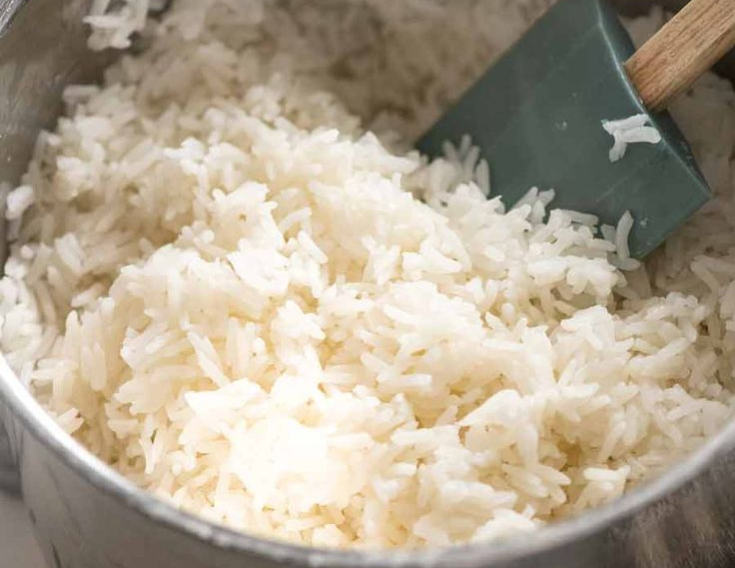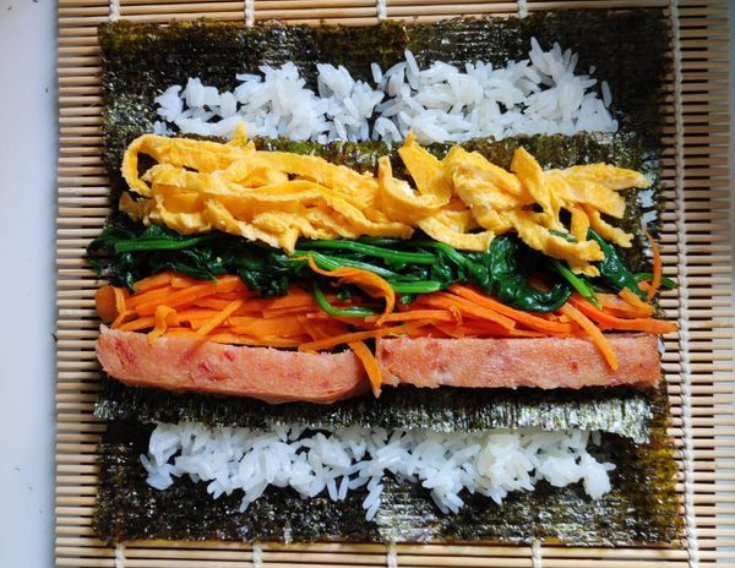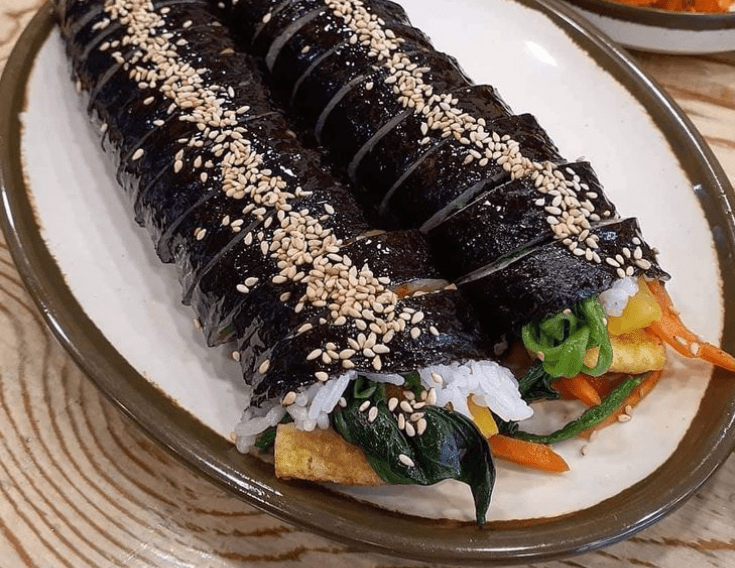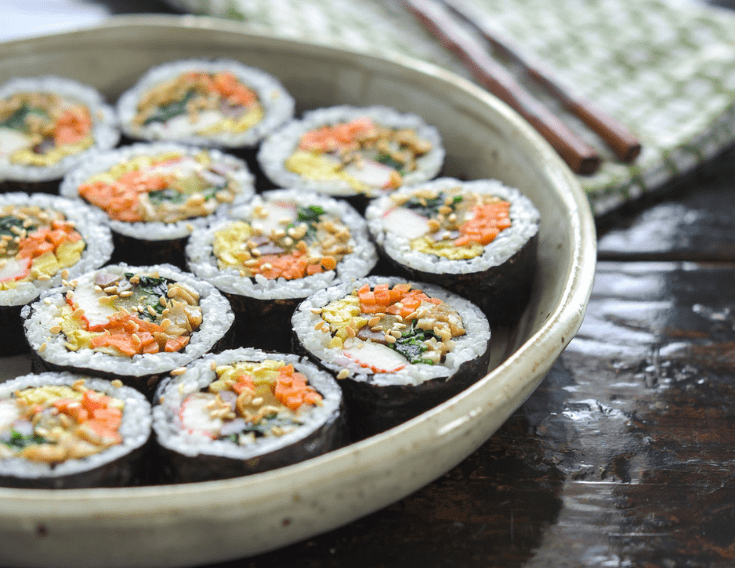Servings 4
- Amount Per Serving
- % Daily Value *
- Total Fat 10g16%
- Saturated Fat 2g10%
- Cholesterol 100mg34%
- Sodium 500mg21%
- Total Carbohydrate 52g18%
- Dietary Fiber 3g12%
- Sugars 4g
- Protein 12g24%
* Percent Daily Values are based on a 2,000 calorie diet. Your daily value may be higher or lower depending on your calorie needs.
Note
1. Rice Preparation:
- Use short-grain or sushi rice for the best texture.
- Ensure the rice is slightly cooled before spreading it on the seaweed to prevent it from becoming too sticky.
2. Seaweed Sheets:
- Use high-quality roasted seaweed sheets (gim/nori) for the best flavor.
- Keep the seaweed sheets dry until you're ready to use them to prevent them from becoming soggy.
3. Filling Ingredients:
- Cut all filling ingredients into long, thin strips to ensure they fit well inside the roll.
- Balance flavors by including a mix of sweet, savory, and tangy fillings like pickled radish and seasoned spinach.
4. Rolling Technique:
- Use a bamboo mat (makisu) to roll the kimbap tightly and evenly.
- Apply gentle but firm pressure while rolling to keep the ingredients compact.
5. Cutting the Kimbap:
- Use a sharp knife to cut the rolls into bite-sized pieces.
- Wipe the knife with a damp cloth between cuts to prevent the rice from sticking.
6. Serving and Storage:
- Serve kimbap fresh for the best taste and texture.
- If you need to store kimbap, wrap it tightly in plastic wrap and refrigerate for up to 24 hours. Note that the texture may change slightly after refrigeration.
7. Customization:
- Feel free to customize your kimbap with different fillings based on your preferences or dietary restrictions.
- Experiment with various proteins, vegetables, and seasonings to create unique flavor combinations.
8. Common Mistakes to Avoid:
- Avoid overfilling the roll, as this can make it difficult to roll and cut.
- Ensure the rice layer is not too thick to maintain the right balance of flavors.
- Don't use too much water when sealing the seaweed, as it can make the roll soggy.
Enjoy your Kimbap!
Keywords:
All Recipes, Kimbap, Lunch, Homemade, Gimbap, Korean Cuisine
Did you make this recipe?
Tag @yumplatterofficial on Instagram and hashtag it #YumPlatterrecipes so we can see all your recipes.
Also Share this Recipe With Your Friends & Family
Pin this Recipe And Share it With Your Followers.
Also follow me on Pinterest @yumplatterofficial for recipe Updates
Thank you for printing this recipe from our website! We hope you enjoy creating delicious dishes in your kitchen. Remember, cooking is not just about ingredients it's about sharing love and creating memories.







